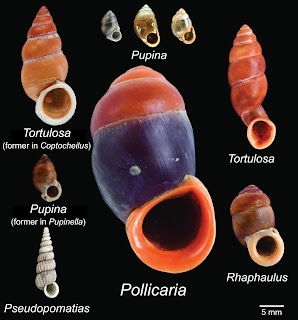 |
| Alpinia arachniformis A.D.Poulsen, in Docot, Haevermans, Sule et Poulsen. 2025. |
Abstract
During explorations of the ginger flora of the Bismarck Archipelago in 2013 and 2023, we made collections of the ginger genus Alpinia sensu lato, some of which had unusually elongated cincinni composed of distichously arranged bracteoles and in the present paper we conclude that these collections document a distinct species new to science, Alpinia arachniformis A.D.Poulsen. The choice of epithet refers to the spider-like appearance of the inflorescence. Similar morphology of the cincinni is found in other lineages of Alpinia, but our molecular analysis using the Internal Transcribed Spacer (ITS) marker established a close relationship with A. oceanica from which the new species differs by having cincinni with more flowers and linear labellum. An ink drawing and colour plates, information on distribution and habitat, and provisional conservation status are provided for the new species as well as a key to species of Alpinia in the Bismarck Archipelago.
Keywords: Alpinia oceanica, Alpinia vittata, Bismarck Archipelago, ITS, Zingiberaceae
Alpinia arachniformis A.D.Poulsen sp. nov.
Diagnosis: Similar to Alpinia oceanica Burkill in the vegetative characters but differs by the erect inflorescence (vs mostly pendulous); exposed distal peduncle (vs hidden within sheaths); cincinni laxly arranged (5–8 mm apart) along the rachis, 3–11 cm long with 2 mm long stalk at base and composed of up to 15 flowers (vs congested, 3–7 cm long, sessile, up to 7); and linear labellum with a retuse apex (vs narrowly triangular, apex truncate).
Etymology: The elongated cincinni suggest a spider-like resemblance.
Rudolph Valentino A. Docot, Thomas Haevermans, Bernard Sule and Axel Dalberg Poulsen. 2025. Alpinia arachniformis (Zingiberaceae): A New Species from New Ireland, Papua New Guinea. Webbia. Journal of Plant Taxonomy and Geography. 80(1); 51-65. DOI: doi.org/10.36253/jopt-17291










































